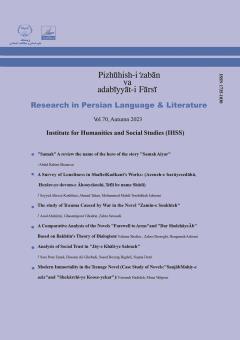In the process of psychological development of any human subject and in order to his socialization, the mind has to learn the categorizations and classifications.Social subject learns to classify the objects, phenomena and concepts in the form of opposites and opposit
More
In the process of psychological development of any human subject and in order to his socialization, the mind has to learn the categorizations and classifications.Social subject learns to classify the objects, phenomena and concepts in the form of opposites and opposite pairs, and this categorization is one of the necessary conditions for entering the social life and world of signs. The necessity of these categorizations necessitates the acceptance of structural rules; in other words, human being shall first give structure to the world for concept making, and giving structure is not possible except in the form of contrary couples.This point is one of the main foundations of structuralism and other similar items in the field of language, mind and social issues.But, if we study the psyche in an original and pre-cultural state, the contradictions indicate the decrease and simplification, and only shows the direction of libido power in socialization current. In other words, the psychic force in its pre-cultural state is a homogenous, unique and united issue experiencing the dissension during the socialization current.This desire to return to the world of unity has appeared in the intuitive thinking and in the epistemological system of our Muslim mystics in the form of the ideas of existential unity. The image of this unified world, in which most of the main contradictions are united in their infrastructure, in the form of a language that is the essence of contrasts, has caused some mystical texts get the paradoxical property and some considerable facilities made therein. In this regard, Shams Tabrizi's articles are one of the most prominent texts.In the present paper, based on the mentioned psychoanalytic concepts, we have shown that in the infrastructure of Shams's thought, the existing contradictions at the level of conscious and social matter are discarded and Shams views them as naturally harmonic affairs in a new epistemological approach.
Manuscript profile


